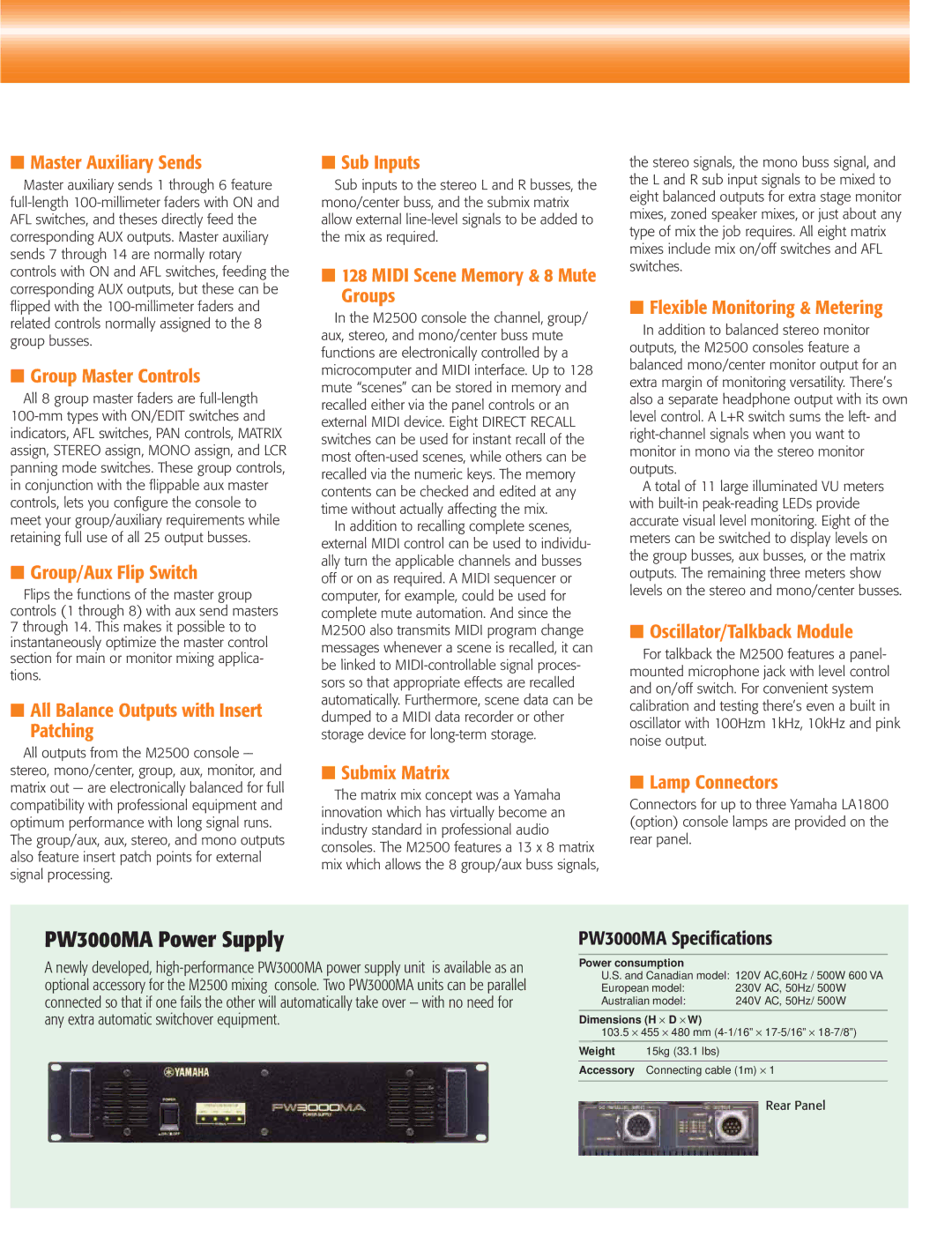mixing consoles specifications
Yamaha has long held a prominent place in the audio industry, particularly known for its innovative mixing consoles. These mixing boards are integral to live sound, studio recording, and broadcasting, thanks to their robust build, user-friendly interfaces, and advanced features. One of the standout elements of Yamaha mixing consoles is the exceptional sound quality they provide through superior analog and digital circuitry.Yamaha's digital mixing consoles, such as the CL Series and QL Series, boast cutting-edge technology that enhances audio manipulation and processing. Advanced digital signal processing (DSP) allows for multiple channels to be handled with ease, providing flexibility and creative options for audio engineers. With numerous onboard effects, EQ settings, and dynamics processing options, users can fine-tune their mixes to perfection.
User interface is another hallmark of Yamaha's mixing consoles. Many models include a touchscreen interface that simplifies navigation through complex settings and functions. The intuitive layout ensures that users can quickly access features such as scene memory, channel strip settings, and routing without unnecessary complexity. Additionally, Yamaha’s Application programming interface (API) facilitates seamless integration with various audio software, enhancing the overall workflow in both live and studio environments.
Network capabilities are also a critical feature within Yamaha mixing consoles. Models like the TF Series leverage the Yamaha's proprietary Dante network protocol, enabling easy multi-device communication over standard Ethernet. This technology allows for the simple daisy-chaining of devices, expanding sound systems without the need for complex wiring.
Furthermore, Yamaha mixing consoles are renowned for their reliability. Built to withstand the rigors of live performance and demanding studio environments, they feature durable chassis and components that can handle frequent use. Additionally, many models come with redundant power supply options, ensuring continued operation even during power interruptions.
Yamaha also places a strong emphasis on scalability. Whether users are in small venues or large concert halls, their mixing consoles can adapt accordingly. With the ability to expand input/output capacities and integrate with various supporting tools, Yamaha consoles can grow with the evolving needs of audio professionals.
In summary, Yamaha mixing consoles combine advanced technology, exceptional sound quality, and user-friendly interfaces to meet the demands of audio professionals worldwide. Their innovative features and reliable performance make them a top choice for those seeking to create high-quality sound in any setting.

